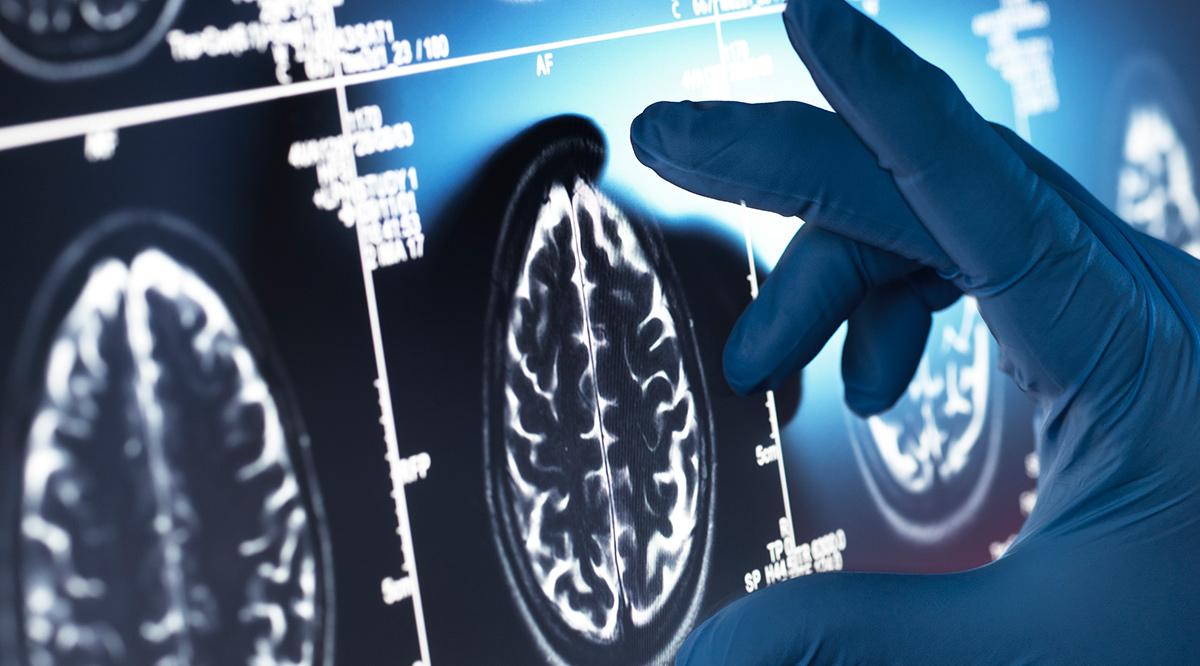A decade ago, Luba Yammine, PhD, was working at a primary care clinic in Texas caring for patients with chronic diseases, including type 2 diabetes. Many of these patients were also cigarette smokers who had unsuccessfully tried quitting before, even with the help of existing smoking-cessation medications.
But after some of the patients started taking a glucagon-like peptide-1 (GLP-1) agonist medication to help manage their diabetes — a medication that was approved by the U.S. Food and Drug Administration (FDA) for treating diabetes in 2005 — they also began reporting they were smoking less or had even stopped altogether.
“This discovery was very intriguing,” says Yammine, now an associate professor of psychiatry at the University of Texas Health Science Center (UTHealth Houston).
She suspected that the introduction of the GLP-1 agonists and the reduced cravings for cigarettes were related. It inspired her body of research into the role of this class of medications, now widely known for their effectiveness as weight-loss drugs, in treating addiction to smoking.
At the same time, other researchers have been exploring GLP-1 agonists’ impact on other types of addictions, such as alcohol use disorder and opioid use disorder (OUD). And some studies have found that the medications may reduce the risk for other brain-related disorders, like dementia and Alzheimer’s disease.
While GLP-1 agonists, particularly those prescribed under the brand names Ozempic, Wegovy, and Mounjaro, have become wildly popular for treating type 2 diabetes and obesity, scientists are just beginning to piece together the effects these medications may have on the brain.
Over the past two decades, researchers have published thousands of papers studying GLP-1 agonists to get to their current use for diabetes and obesity, and further research is needed to fully assess their safety and effectiveness for behavioral health conditions. But so far, the results are promising, says Patricia “Sue” Grigson, PhD, professor and chair of the Department of Neuroscience and Experimental Therapeutics at Penn State College of Medicine.
Quieting the craving
GLP-1 agonists work by imitating a natural hormone (GLP-1) created in the small intestine in response to food intake, but there are GLP-1 receptors not only in the stomach, small intestine, colon, and pancreas — to aid in digestion — but also in the heart, kidneys, lungs, and brain.
One of the ways that GLP-1 agonists help a person lose weight is by sending the brain signals of satiety, essentially quieting the urge to overeat. Researchers suspected that this same mechanism could help with addiction cravings — for substances ranging from alcohol to cocaine to opioids.
Grigson and her coprincipal investigator, Scott Bunce, PhD, an associate professor in the Department of Psychiatry and Behavioral Health at Penn State College of Medicine, are studying this effect for patients with OUD.
“We know dopamine is one of our main reward neurotransmitters,” Grigson says. “It’s released when we consume food, alcohol, nicotine, etc. GLP-1 blocks that dopamine peak.”
Grigson started studying this phenomenon in rodents in 2018 and found that those addicted to heroin and given a GLP-1 agonist reduced their heroin taking, compared with the ones that were not given a GLP-1 agonist. In addition, they had a reduced chance of relapse, even when exposed to cues associated with taking the drug, the drug itself, and stressors that tend to trigger drug-seeking behavior.
Based on the promising preclinical data, Bunce conducted a small, double-blind, placebo-controlled trial funded by the National Institute on Drug Abuse and Novo Nordisk, the company that makes Ozempic and Wegovy. The trial took place at an inpatient rehabilitation center where the patients were already receiving treatment with the option to take the OUD medication buprenorphine. Twenty patients opted to join the study, 13 of whom chose to be on buprenorphine. Half of the patients received the GLP-1 agonist medication, and the other half received a placebo, with a mix of those also taking buprenorphine and not taking it in each group. The patients took the medication or placebo for 18 days, during which they were prompted four times a day on smartphones to indicate their level of opioid craving. Bunce and his team found that, after three weeks, the GLP-1 agonist group reported a 40% reduction in cravings compared with the standard care-only group. The GLP-1 agonist group also noted that cravings were reduced at the lowest dose during the first six days of receiving the medication, whether or not the participants were taking buprenorphine.
Grigson and Bunce have now expanded to a larger-scale trial across three outpatient clinical sites.
“Recruitment is moving rapidly. Everyone asked has said yes,” Bunce says, attributing it to the broader popularity of GLP-1 medications for weight loss in recent years.
Anecdotally, Bunce is already seeing the impact of GLP-1 agonist medications on his patients. Even outside of the clinical trial, patients who have struggled with addiction who were prescribed GLP-1 agonists for weight loss have told him that they find resisting the cravings more manageable.
“It just silenced that noise, if you will,” Bunce says. “And it allows them to make better choices.”
And while he’s excited by the prospect of a new, effective treatment for OUD, a disease that killed about 87,000 people in the United States in 2024, Bunce is careful to note that it’s a cautious optimism while more data are collected.
“Having a medication doesn’t mean the epidemic is going to go away,” he says. “We have roughly 30 medications for depression. For opioid use disorder, we have three. It’s a big difference, having this medicine that works on a different mechanism. Is it going to work for everybody? No. But is it going to be useful for a lot of people? Yes, and we need it.”
Brain benefits beyond addiction
An expanding body of research suggests that, even beyond controlling satiety and curbing cravings in the brain, the GLP-1 hormone additionally plays a role in regulating inflammation and preventing cell death, which in turn may help with brain health and staving off cognitive impairment.
“I’m certainly open to the possibility that these kinds of drugs can have an impact on cognition and aging,” says Ronald Petersen, MD, PhD, director of the Mayo Clinic Alzheimer’s Disease Research Center. “I understand how these might slow the rate of progression in a general sense using multiple mechanisms.”
For example, diabetes, cardiovascular disease, and obesity are all risk factors for developing dementia, so using GLP-1 agonists to improve these various aspects of health may, in turn, protect cognition.
One recent analysis of six years of medical records from the Department of Veterans Affairs, which reviewed the records of 2 million patients with diabetes, found that those taking a GLP-1 agonist medication had a reduced risk of developing dementia, including Alzheimer’s, as well as psychiatric and substance use disorders, though it also found an increased risk of gastrointestinal disorders, kidney stones, and pancreatitis.
Some preclinical studies have found that the GLP-1 hormone may help prevent the buildup of tau tangles and amyloid plaques, which are associated with Alzheimer’s disease, but researchers stressed the need for more data.
Petersen is looking forward to seeing the results, later this year, of a multiyear Novo Nordisk clinical trial studying the impact of taking semaglutide, the GLP-1 agonist used in Ozempic and Wegovy, on Alzheimer’s patients. A similar clinical trial using an older GLP-1 medication found that, in a cohort of 200 patients, those receiving the drug showed 18% slower cognitive decline and 50% slower shrinkage of the brain over a year.
“I think this is somewhat intriguing,” Petersen says. “Down the road, we’re going to need a combination of therapies to treat cognitive impairment. It’s not going to be one silver bullet.”
Cautious optimism
While early research seems promising, especially for conditions that have limited treatments available — such as substance use disorder and dementia — effectiveness in the real world is less predictable.
A 2024 KFF survey found that about 12% of U.S. adults reported having taken a GLP-1 agonist medication at some point, and 54% of those who took it reported difficulty paying for the medication. The list price for Wegovy is $1,350 for a 28-day supply, but in March 2025, Novo Nordisk launched a direct-to-patient delivery pharmacy for those taking the medication without insurance coverage, charging $499 a month.
The pharmaceutical company said this was to help combat the “dangers of fake or illegitimate” semaglutide from compounding pharmacies, which had been allowed to copy the brand-name medications during a shortage driven by their popularity. The FDA had issued warnings about the safety of some compounded versions of semaglutide and, in February, declared an end to the shortage of the approved medication.
The medications, which are administered as injections, also have several unpleasant side effects, such as nausea, vomiting, diarrhea, constipation, stomach pain, and pancreatitis, as well as the rare serious side effects of acute pancreatitis, stomach paralysis, and gallbladder disorders.
A Blue Cross Blue Shield analysis of insurance records from 2014 to 2023 found that about half of those prescribed a GLP-1 agonist stopped taking it within 12 weeks. Clinical data show that patients often regain weight after discontinuing use.
While pharmaceutical companies and academic scientists are currently working on new and improved formulations of GLP-1 agonists with more targeted benefits and fewer side effects, Grigson says more data are needed and it’s important to avoid off-label use of existing GLP-1 agonists while the research is being done.
“We have a lot of work to do, and we do need the support of the NIH [National Institutes of Health] and sometimes pharmaceutical companies in order to get the testing done,” she says.
Yammine, who conducted a pilot study for use of GLP-1 agonist medication for smoking cessation, adds that, though the results were promising, they are preliminary and need to be validated in larger randomized clinical trials. Another issue is that participants in her studies are people who have prediabetes or are overweight or obese, so the results may not be generalizable to people without these conditions.
But for a condition as widespread and devastating as addiction, Yammine is eager to help put an additional tool in the treatment toolbox.
“These medications can make a huge deal of difference in the treatment of addiction if they show efficacy,” Yammine says. “That’s our hope; that is why we are doing the research that we are doing.”

